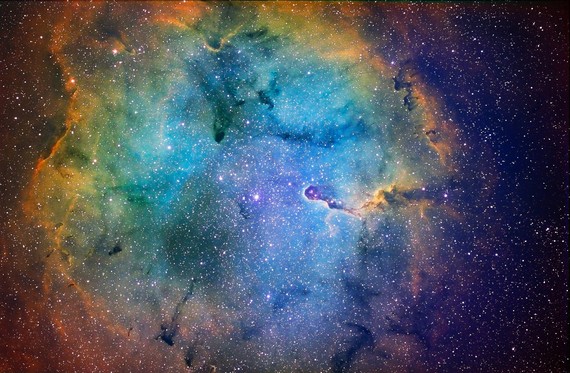Get your astronomical calendars ready. Perfect for backyard and urban star gazers, these will be the top stellar highlights for 2015.
The planets Venus and Jupiter return to the evening skies this January. Jupiter will be rising in the east as Venus sets in the west. Both planets will be so incredibly bright that you might mistake them for something else... They join the twinkly stars Sirius and Capella as the most-reported UFOs - but please don't be fooled.
Conjunctions and Occultations with a Side of Pi
Planets will pass very close to each other throughout the 2015. On January 10, Mercury and Venus will shine together just after sunset. On the evening of February 20, the Moon forms a tight triangle with Venus and Mars. And on June 30, the two brightest planets, Venus and Jupiter will appear so close together at twilight that it may be difficult to tell them apart. Venus and Jupiter will meet again in the morning sky on October 26 and line up with Mars on October 28. Finally, don't miss the slim crescent moon cozying up with Venus on the morning of November 7.
For star gazers in the U.S., the Moon will cross in front of two planets this year. These occultations make for very cool sights in a telescope. The first occultation will be on the evening of February 21. As you will see Venus and Mars next to each other, the Moon will occult the planet Uranus. And in the afternoon of December 7, the Moon will cover over Venus.
March 14, 2015 will be a very mathematical day. Mathematicians celebrate the number 'Pi,' approximated to 3.14, during the third month on the 14th day (every March 14). This is 'Pi Day.' You may have used this mathematical constant to help compute the circumference and area of a circle, but 3-14-15 will be an especially nice Pi Day. If you round the value for Pi to the nearest ten-thousandth it is 3.1415. And if you celebrate one moment on Pi Day, I recommend setting your alarm for 9:27. Rounded to the nearest ten-millionth, Pi is 3.1415927.
Eclipses, Meteors, an Asteroid and Pluto
Following the twin lunar eclipses of 2014, there will be two more in 2015. The first lunar eclipse will be on April 4 just before sunrise. However it will occur so late in the morning that viewers on the east coast will miss it. People in the Midwest will see just the beginning of the eclipse while those in the mountain states and Pacific Coast will see almost all of it.
*The more exciting and widely accessible lunar eclipse will be on the evening of September 27. All lunar eclipses occur on full moons, but this one will also be a Harvest Moon, and a Supermoon. This closest and largest full Moon of the year will also turn blood red when it enters the shadow of the Earth. Plus it will be visible all across the U.S. Look for it in the evenings skies that Sunday.
On March 20 there will be a total solar eclipse - only visible from the remote Faroe Islands, Svalbard and ships trawling the Norwegian Sea. The next total solar eclipse in the United States will be August 21, 2017.
This year, the Moon should not interfere with the major meteor showers. That means you will have a better chance of observing shooting stars around the Perseids on August 12-13, the Leonids on November 17-18, and the Geminids on December 13-14.
This year we will go where no spacecraft has gone before. NASA's Dawn mission will begin orbiting around the largest asteroid, Ceres, in April. And on July 14, the New Horizons spacecraft will pass by everyone's favorite dwarf planet, Pluto. Astronomers (and the Pluto-loving public) have been waiting over 80 years to see what the cold, dark world really looks like - the wait is almost over.


